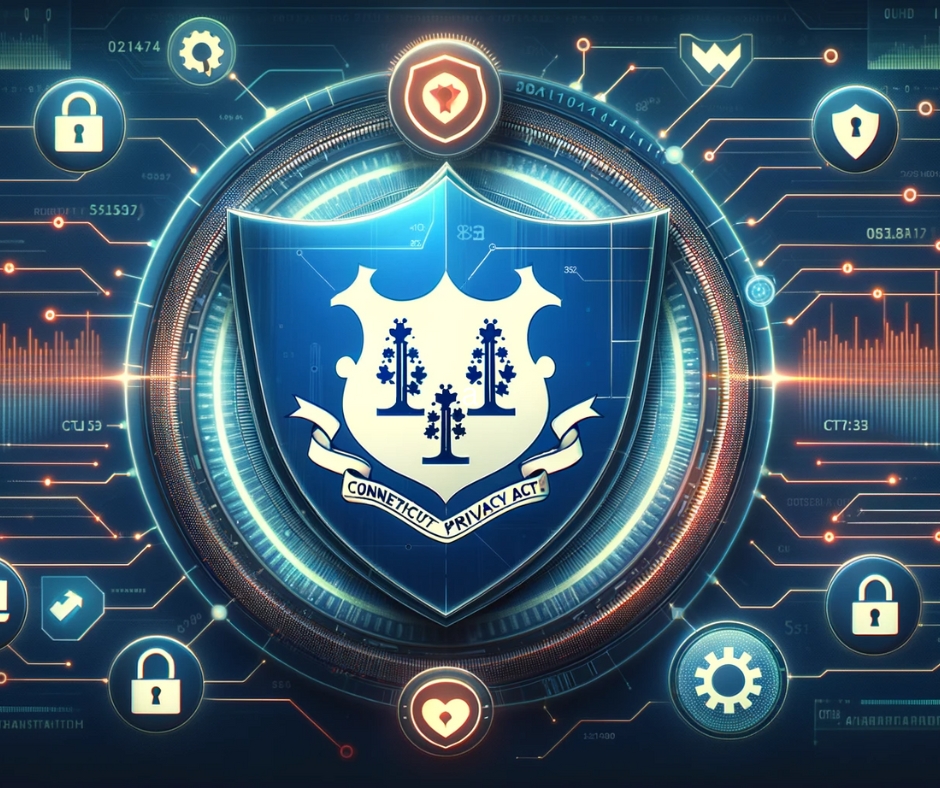
Description of How a Data Breach Could Occur
We’ve all seen the big movie productions of hackers breaking into a network and stealing data. It’s usually characterized by computer screens full of flashing content and someone rapidly typing on a keyboard.
While this does happen, it is not the norm. It is the exception to data breaches. We wanted to share a more common approach to how a data breach occurs, and just how easy it can be to “hack” a network.
Data breaches can happen in various ways, often combining technological vulnerabilities with human factors. Here is a detailed description of a typical scenario:
Initial Compromise:
- Phishing Attack: The breach might begin with a phishing attack. An employee receives an email that appears to be from a trusted source, such as a known vendor or internal department. This email contains a malicious link or attachment.
- Malware Infiltration: Once clicked or downloaded, the malware embedded in the link or attachment is installed on the employee’s computer. This malware could be a Trojan horse, spyware, or ransomware, designed to infiltrate the system and create a backdoor for attackers.
Lateral Movement:
- Network Exploration: Utilizing the compromised machine, the attacker explores the company’s network. This phase involves mapping out the network, identifying valuable data repositories, and understanding the security measures in place.
- Credential Harvesting: The attacker may use techniques like keylogging or exploiting security weaknesses to gather login credentials, allowing further access to sensitive areas of the network.
Escalating Privileges:
- Administrator Access: With harvested credentials, the attacker attempts to gain higher-level privileges, ideally administrative access. This escalation is crucial for the attacker to access protected data and move freely within the network.
- Bypassing Security Measures: Higher privileges enable the attacker to bypass security software, modify logs to hide their tracks, and disable alarm systems that might flag unusual activity.
Data Exfiltration:
- Data Identification and Collection: The attacker locates and collects sensitive data, such as personal customer information, financial records, or intellectual property.
- Data Transmission: This data is then transmitted to an external location controlled by the attacker. This transmission might be done slowly and in small amounts to avoid detection.
Avoiding Detection:
- Use of Encrypted Channels: To evade network security monitoring, the data is often sent over encrypted channels.
- Timing the Transfer: Data exfiltration might be timed during peak hours or alongside legitimate large data transfers to blend in with regular traffic.
Post-Breach Activity:
- Maintaining Access: Attackers may leave behind additional backdoors to re-enter the system in the future.
- Covering Tracks: Finally, attackers attempt to erase evidence of their activities, including modifying or deleting logs.
Throughout this process, the combination of technical skill, knowledge of security systems, and exploitation of human errors or weaknesses allows attackers to breach even well-protected networks. Regular employee training on cybersecurity, robust security protocols, and continuous monitoring of network activity are crucial in preventing such breaches.
 Why Training & Awareness is So Important to Data Breach Prevention
Why Training & Awareness is So Important to Data Breach Prevention
Training and awareness are crucial elements of any cybersecurity and data breach prevention program for several reasons:
- Human Factor as a Weak Link: Employees are often considered the weakest link in cybersecurity. Without proper training, they are more likely to fall prey to phishing attacks, social engineering tactics, or other forms of manipulation that can lead to data breaches.
- Educating on Best Practices: Training programs educate staff on best practices for handling sensitive information, using strong passwords, recognizing suspicious emails or links, and safely using technology both in and out of the workplace.
- Creating a Security-Conscious Culture: Regular awareness programs help in fostering a culture of security within the organization. When employees are regularly reminded of the importance of cybersecurity, they become more vigilant and responsible in their daily actions.
- Compliance with Regulations: Many industries have regulatory requirements for employee training in data protection and privacy. Regular training ensures compliance with these legal obligations, thereby avoiding potential fines and legal issues.
- Adapting to Changing Threats: The cyber threat landscape is constantly evolving. Ongoing training helps employees stay updated on the latest threats and the evolving tactics of cybercriminals.
- Incident Response Preparedness: Training can also prepare employees on how to respond in the event of a security incident, minimizing potential damage and ensuring a swift and effective response.
- Empowering Employees: Knowledgeable employees are empowered to make smart decisions and take proactive steps to protect their organization’s data, turning them from potential security liabilities into assets.
- Reducing Risk of Data Breaches: Ultimately, educated and aware employees can significantly reduce the risk of data breaches, as many breaches are a result of human error or lack of awareness.
In summary, training and awareness programs are vital in equipping employees with the necessary knowledge and skills to protect against cybersecurity threats, thereby playing a key role in the overall effectiveness of a data breach prevention strategy.
While protecting PII (Personally Identifiable Information) and proprietary data should be motivation enough to include a training and awareness program as part of your cybersecurity plan both CT and FL have laws regarding the safeguarding of data. Here are summaries of both.
Connecticut Data Privacy Act
 The Connecticut Data Privacy Act (CTDPA) is a significant piece of legislation that enhances consumer privacy rights and imposes new obligations on businesses handling personal data. In the context of understanding how data breaches can occur, it’s important to recognize the relevance of the CTDPA.
The Connecticut Data Privacy Act (CTDPA) is a significant piece of legislation that enhances consumer privacy rights and imposes new obligations on businesses handling personal data. In the context of understanding how data breaches can occur, it’s important to recognize the relevance of the CTDPA.
Key Points of the CTDPA:
- Consumer Rights: The CTDPA grants Connecticut residents rights similar to those in the GDPR and CCPA, such as the right to access, correct, delete, and obtain a copy of personal data.
- Data Protection and Privacy Policies: Businesses must implement comprehensive data protection strategies to safeguard consumer data, including clear privacy policies detailing data handling practices.
- Scope and Applicability: The act applies to businesses that process significant volumes of personal data, especially those that derive a substantial portion of their revenue from selling personal data.
- Breach Notification: In the event of a data breach, the CTDPA requires timely notification to affected individuals and authorities, highlighting the importance of having robust incident response plans.
Relation to Data Breaches:
- Preventive Measures: The CTDPA emphasizes the need for businesses to adopt preventive measures against data breaches, like regular cybersecurity training for employees and robust data encryption.
- Liability and Compliance: The act ensures that businesses are accountable for data breaches, stressing the importance of compliance with privacy laws to avoid legal consequences and maintain consumer trust.
- Awareness and Response: It encourages greater awareness among businesses about the potential ways a data breach can occur and necessitates having an effective response plan in place.
In conclusion, the CTDPA not only strengthens consumer privacy rights but also serves as a reminder for businesses about the critical need to protect data. Understanding and adhering to the requirements of the CTDPA is essential for preventing data breaches and mitigating their impact should they occur.
Florida Information Protection Act
 Florida has specific legislation governing data breaches, primarily outlined in the Florida Information Protection Act of 2014 (FIPA). This act enhances the obligations of businesses and governmental entities regarding the protection of personal information and the requirements to report data breaches. Here’s a brief overview of the key aspects of this law:
Florida has specific legislation governing data breaches, primarily outlined in the Florida Information Protection Act of 2014 (FIPA). This act enhances the obligations of businesses and governmental entities regarding the protection of personal information and the requirements to report data breaches. Here’s a brief overview of the key aspects of this law:
- Scope and Definition:
- FIPA applies to any commercial or governmental entity that acquires, maintains, stores, or uses personal information of Florida residents.
- The law defines “personal information” broadly, including individuals’ names in combination with their social security numbers, driver’s license numbers, financial account numbers, health insurance policy numbers, medical information, etc.
- Data Breach Notification Requirements:
- In the event of a data breach, the law requires that affected individuals be notified as soon as possible, but no later than 30 days after the breach has been determined.
- If the breach affects 500 or more Florida residents, the Florida Department of Legal Affairs must also be notified within 30 days.
- Security Measures:
- Entities are required to take reasonable measures to protect and secure data containing personal information.
- This includes disposing of customer records that contain personal information by shredding, erasing, or otherwise modifying the personal information to make it unreadable or undecipherable.
- Penalties for Non-Compliance:
- Failure to comply with FIPA can result in penalties, including fines. The law allows for civil penalties up to $500,000 for violations.
- Exemptions and Special Considerations:
- There are certain exemptions and special considerations, for example, for entities covered by the Health Insurance Portability and Accountability Act (HIPAA).
This legislation reflects Florida’s commitment to protecting the personal information of its residents and the importance of rapid response and transparency in the event of a data breach. Businesses operating in Florida must ensure compliance with FIPA to avoid legal repercussions and to maintain the trust of their customers and clients.
